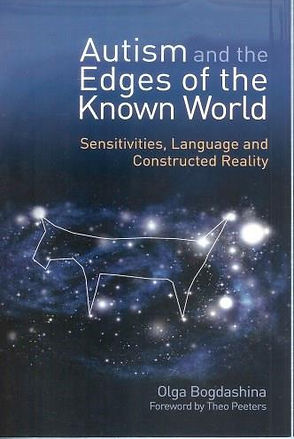
Sensitivities & Constructed Realities
The traditional approach, which describes unusual reactions and behaviours in responses to sensory stimuli is very limited – it doesn’t provide answers to many why-questions. The search for answers shouldn’t be restricted to the field of psychology and neuroscience. Autism can help us understand how we have developed faculties and shaped our cognition, language and behaviour. By placing the experiences of autism within the wider scope of human perception helps us appreciate different ways to look at and interpret the world.
It’s necessary to be open-minded and willing to learn from autism about different ways to experience the world around us. I attempt to weave together science (neurology, psychology, anthropology, linguistics and philosophy) and real life experiences of people with autism in order to provide a greater understanding of how sensory differences can bring people with autism to the edges and beyond of ‘normal’ perception.
We can look at these phenomena from an anthropological perspective: e.g., to consider so-called ‘telepathy’ as a form of non-verbal communication. For instance, we do not see anything mystical or supernatural in animals’ ‘telepathy’: when animals use the sense of smell to ‘read’ messages about the health of their owners or pick up subtle cues to know when they are to be taken to the vet’s. There’s nothing ‘psychic’ about their ability – they have been doing it all their lives.
And last but not least, the language we speak limits (and distorts) our perceived worlds even further. The way we talk about autism and life in general changes the way we think about it. Linguistic filters, taboos and conventions hold us back in our attempts to learn about autism and change our attitudes to differences. Only opening our minds to diversity and acknowledging the filters that prevent us to ‘see’ it, will bring better understanding not only people with ASDs but ourselves (our real ‘selves’).
It’s necessary to be open-minded and willing to learn from autism about different ways to experience the world around us. I attempt to weave together science (neurology, psychology, anthropology, linguistics and philosophy) and real life experiences of people with autism in order to provide a greater understanding of how sensory differences can bring people with autism to the edges and beyond of ‘normal’ perception. We have to challenge common perceptions of what it means to be 'normal' and 'abnormal' and look at how the nature of the senses inform an individual's view of the world, and how language both reflects and constructs that view; how the senses and language interact differently in the autistic individual and what it means to be human.
Books

Interview
An interview with Autismhangout (2011)
.jpg)